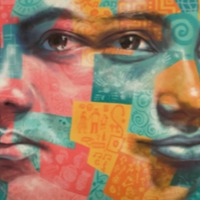
Dian W.
There are an estimated 61,000 people living in modern slavery in Saudi Arabia (GSI 2018). It is a source and destination country for men and women trafficked from South and South East Asia and Africa. People voluntarily migrate to the country to work in a variety of sectors including construction and domestic service; many of these workers are vulnerable to forced labour. Traffickers and brokers often illegally recruit migrants to work in Saudi Arabia and subsequently forced them into domestic servitude or debt bondage. Female domestic workers are particularly at risk of trafficking due to their isolation inside private residences. Non-payment or late payment of wages remains a complaint from foreign workers, while employer's withholding of worker's passports remains a significant problem. Trafficking perpetrators include businesses of all sizes, private families, recruitment companies in both Saudi Arabia and labor-sending countries, and organized criminal elements. Dian W. travelled to Saudi Arabia as a domestic worker, but what she found was physical and sexual abuse. She was raped by her employer and his son, having a baby as a result of the assaults. Dian ran away to the embassy shelter with her child in the hopes of returning home.
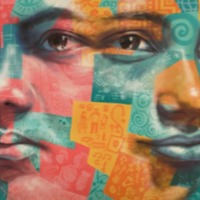
Chamali W.
There are an estimated 61,000 people living in modern slavery in Saudi Arabia (GSI 2018). It is a source and destination country for men and women trafficked from South and South East Asia and Africa. People voluntarily migrate to the country to work in a variety of sectors including construction and domestic service; many of these workers are vulnerable to forced labour. Traffickers and brokers often illegally recruit migrants to work in Saudi Arabia and subsequently forced them into domestic servitude or debt bondage. Female domestic workers are particularly at risk of trafficking due to their isolation inside private residences. Non-payment or late payment of wages remains a complaint from foreign workers, while employer's withholding of worker's passports remains a significant problem. Trafficking perpetrators include businesses of all sizes, private families, recruitment companies in both Saudi Arabia and labor-sending countries, and organized criminal elements. Sri Lankan domestic worker Chamali W. was trafficked to Saudi Arabia. She describes the sexual harassment she experienced form her employer’s two sons.
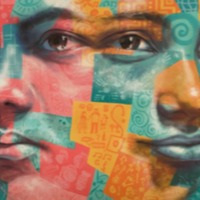
Tammy
There are an estimated 403,000 people living in modern slavery in the United States (GSI 2018). Sex trafficking exists throughout the country. Traffickers use violence, threats, lies, debt bondage and other forms of coercion to compel adults and children to engage in commercial sex acts against their will. The situations that sex trafficking victims face vary, many victims become romantically involved with someone who then forces them into prostitution. Others are lured with false promises of a job, and some are forced to sell sex by members of their own families. Victims of sex trafficking include both foreign nationals and US citizens, with women making up the majority of those trafficked for the purposes of commercial sexual exploitation. In 2015, the most reported venues/industries for sex trafficking included commercial-front brothels, hotel/motel-based trafficking, online advertisements with unknown locations, residential brothels, and street-based sex trafficking. Tammy was trafficked into prostitution in the state of Nebraska. Here, Tammy draws on her own experience to suggest ways to support women after they have escaped their trafficking situation. She highlights the lack of access to shelter, financial support and education. She also underlines the importance of rehabilitations of traffickers before they are released from jail.
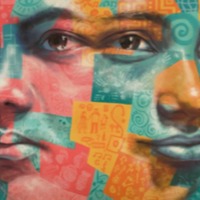
P.
There are an estimated 23,000 people in modern slavery in Belgium (GSI 2018). People are subjected to sex and labour trafficking in the country, with foreign-born people coming primarily from Asia, Eastern Europe, North and Sub-Saharan Africa. Labour traffickers exploit men in restaurants, bars, sweatshops, horticulture, fruit farms, construction, cleaning businesses and retail shops, they also exploit foreign workers in domestic servitude. Sex trafficker exploit Belgian girls, some of whom recruited by local pimps, and foreign children, including Roma. Forced begging within the Romani community in Belgium also occurs, while asylum seekers often have their applications for legal status denied, increasing their vulnerability to trafficking. P was in high school when she fell in love with a boy who convinced her to go to Belgium with him. Upon arrival, he became abusive and trafficked P for six months across the country. P was finally able to escape and find shelter with people who helped her return to Albania.
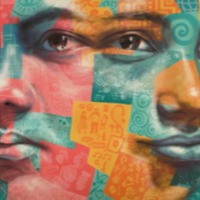
M.
There are an estimated 23,000 people in modern slavery in Belgium (GSI 2018). People are subjected to sex and labour trafficking in the country, with foreign-born people coming primarily from Asia, Eastern Europe, North and Sub-Saharan Africa. Labour traffickers exploit men in restaurants, bars, sweatshops, horticulture, fruit farms, construction, cleaning businesses and retail shops, they also exploit foreign workers in domestic servitude. Sex trafficker exploit Belgian girls, some of whom recruited by local pimps, and foreign children, including Roma. Forced begging within the Romani community in Belgium also occurs, while asylum seekers often have their applications for legal status denied, increasing their vulnerability to trafficking. M was walking to a friend’s house when she was abducted and taken to a house in Vlore where other girls were being kept. After being held there for two weeks, M was smuggled by boat to Italy and then on to Paris by train and then on again to Brussels. Upon arrival, M was forced into prostitution, subjected to physical and sexual abuse daily. One night, M was rescued by police who referred her to a shelter who are assisting M in reuniting with her family.
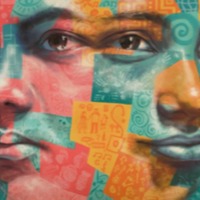
Pasi
There are an estimated 403,000 people living in conditions of modern slavery in the United States (GSI 2018). The US attracts migrants and refugees who are particularly at risk of vulnerability to human trafficking. Trafficking victims often responding to fraudulent offers of employment in the US migrate willingly and are subsequently subjected to conditions of involuntary servitude in industries such as forced labour and commercial sexual exploitation. Pasi was brought from Indonesia to the USA with her niece for domestic work by a family who promised to pay her $150 a month. Pasi never received this money and was forced to work for long hours with no pay for two and a half years. Eventually Pasi went to the police who took her away from her traffickers, but with no shelter for trafficked people available Pasi was forced to spend the night in prison. The next day a case manager from California Against Slavery and Human Trafficking came to pick her up and took Pasi to a shelter.
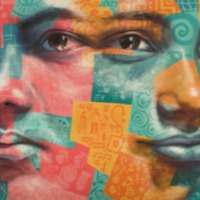
Rosa
There are an estimated 10,000 people living in conditions of modern slavery in Lebanon (GSI 2018). It is a destination for Asian and African women trafficked for the purpose of domestic servitude, and for women from Easter Europe for commercial sexual exploitation. There are estimated 200,000 migrant domestic workers in Lebanon and until 2012, Lebanon was the top country of destination for female migrant workers from Nepal. Women who travel to Lebanon legally to work as household servants often find themselves in conditions of forced labour through the withholding of passports, non-payment of wages, restrictions on movement, threat and physical of sexual assault. A Togolese former domestic worker. She received support from Caritas, which is a confederation of 165 member organizations that serve the world’s poor, vulnerable, dispossessed and marginalized. Since 1994, Caritas Lebanon has responded to the legal, social and humanitarian needs of migrant domestic workers and refugees. To date, they have provided vital support to more than 1,540,000 migrant beneficiaries.
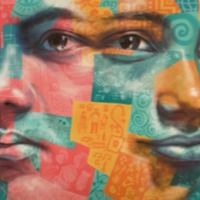
Panshi
The Global Slavery Index 2018 estimates that on any given day there were nearly 8 million people living in modern slavery in India. The GSI 2018 reports an emerging trend in northeast India where organised trafficking syndicates operate along the open and unmanned international borders, duping or coercing young girls seeking employment outside their local area in to forced sexual exploitation. Many women and girls are lured with the promise of a good job but then forced in to sex work, with a 'conditioning' period involving violence, threats, debt bondage and rape. Panshi grew up in Mumbai and lived with her mother, younger sister and younger brother. When she was 13 she was forced to drop out of school as her family could no longer afford it. She met an 18 year old boy, a friend who envisioned a better life for her. He tried to get her parents to allow her to continue her studies and told them he’d marry her, however her parents sent her to a different village. She was eventually told she could return to the city if she took up the family business. Panshi was 14 years old when she was forced in to prostitution by her family. When her friend tried to get her out of the life, she was taken in by the state as a minor and placed in a shelter.
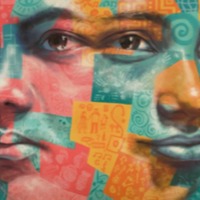
Shahida
There are an estimated 749,000 people living in conditions of modern slavery in Afghanistan (GSI 2018). Afghanistan remains a source, transit and destination country for men, women and children subjected for forced labour and sex trafficking, with internal trafficking being more prevalent than transnational. Victims of trafficking in the country are subjected to bonded labour, in which whole families are often trapped, along with children being exploited in carpet making and brick factories, domestic servitude, commercial sex, begging and drug smuggling. Shahida was 13 years old when she was forced to marry a 45 year old man. Though she ran away, her father forced her to return to her husband, when she refused, he attempted to bury her alive. Shahida was eventually able to escape to a shelter and then was able to get the help she needed from Hagar International.
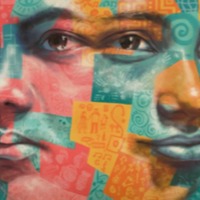
Andreea
Despite having the lowest regional prevalence of modern slavery in the world, Europe remains a destination, and to a lesser extent, a source region for the exploitation of men, women and children in forced labour and commercial sexual exploitation. According to the most recent Eurostat findings, European Union (EU) citizens account for 65 percent of identified trafficked victims within Europe. These individuals mostly originate from Eastern Europe, including Romania, Bulgaria, Lithuania and Slovakia. In Albania and Bosnia and Herzegovina, the European Parliament has identified corruption and the judicial system as reform challenges towards accession talks within the EU. In Greece, the turbulent economic situation has increased vulnerability for populations seeking employment and livelihood opportunities. In Greece, unemployment reached 24.4 percent in January 2016 with a youth unemployment rate of 51.9 percent. “Andreea” does not explain in this narrative how she came to stay with a much older woman when she was a teenager. However, her friend brought her into sexual exploitation, from which she only escaped when her brother-in-law found her and informed the police.
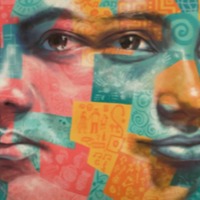
Elira
Born in Albania, Elira was trafficked into Italy, where trafficking victims also arrive from Nigeria, Romania, Bulgaria, China, and South America. One NGO estimates that 48 percent of the prostitutes in Italy are from Eastern Europe.
Many women are trafficked into richer Western European countries from the poorer Eastern countries, including Albania. The fall of communism in 1991 led to a rise in organized crime in Albania: in 2001 it was estimated 100,000 Albanian women and girls had been trafficked to Western European and other Balkan countries in the preceding ten years. More than 65 percent of Albanian sex-trafficking victims are minors at the time they are trafficked, and at least 50 percent of victims leave home under the false impression that they will be married or engaged to an Albanian or foreigner and live abroad. Another ten percent are kidnapped or forced into prostitution. The women and girls receive little or no pay for their work, and are commonly tortured if they do not comply.